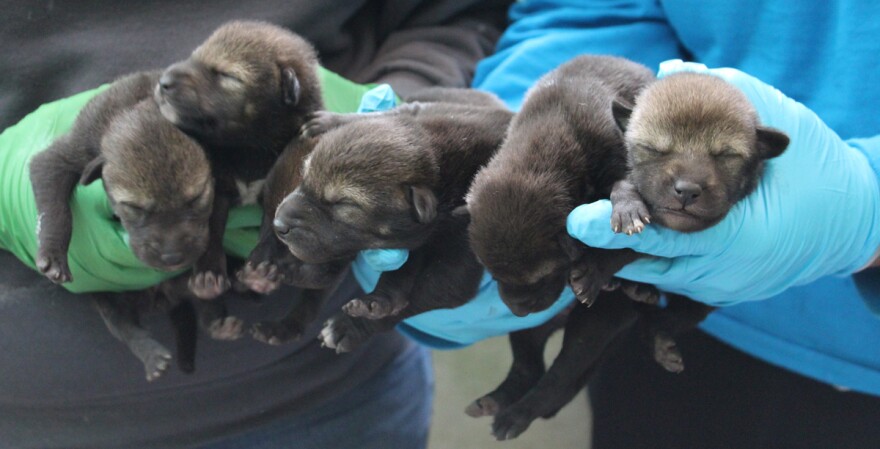A new red wolf has arrived at the Museum of Life and Science in Durham.
Museum staff said they hope the new male will help with population recovery efforts for the endangered species. Red wolves are considered the rarest wolf species in the world. The only wild population exists in North Carolina, with fewer than 20 red wolves.
Nine-year-old Adeyha joined the museum last week. Sherry Samuels, the museum’s senior director of animal care, said Adeyha's name comes from the Cherokee language, meaning "in the oak woods." Fittingly, he'll be paired for breeding with Oak, the museum's female red wolf.
So far, Adeyha and Oak seem to be doing well together, Samuels said.

“We tend to just let nature take its course and — 'hope for the best' sounds a little flippant — but that is some of what we do,” Samuels said. “We provide them a home and know that we want pups. But even if we don't, we have the opportunity for over 500,000 people to get to meet red wolves here at the museum.”
Oak had previously been paired with a red wolf named Niko. After two years with no successful pregnancies, the museum swapped Niko for Adeyha from the Niabi Zoo in Illinois. Samuels said the hope is that each male’s new pairing will produce pups to help with the red wolf population.
The museum’s red wolf conservation efforts are part of the Red Wolf SAFE (Saving Animals From Extinction) program, run by the Association of Zoos and Aquariums. The program promotes red wolf education and research, and also breeds and cares for captive red wolves to increase species numbers.
“Our role as humans and being stewards of our earth is critical for so many reasons,” Samuels said. “Teaching the people who come here about empathy for the world around us, critical thinking, about how complex this program is, it's such a need in our society today. So, the SAFE program really helps tie all of that together.”

Since 1992, the Museum of Life and Science has welcomed more than 25 red wolf pups. Samuels said that some pups born as part of the SAFE program are “cross-fostered.” If a wild red wolf litter is born at the same time as a SAFE litter, wildlife biologists can take a pup from the program and place it with the other litter to be raised in the wild. Samuels said in these instances, the wild mother has always accepted the new pup.
Adult red wolves in the SAFE program may also be slated for release into the wild if they have the appropriate characteristics, such as being great hunters who avoid people.
The red wolf breeding season starts in January. Samuels said all pups are born between March and May.







